Common problems with strawberries – 6 simple issues that can reduce your harvest
If your strawberries aren't growing how you expected, one of these common mistakes could be to blame


Although growing strawberries is super rewarding, there are some common problems and mistakes that can occur. So, to succeed and get healthy plants and the best harvests, there are key points to remember and things to avoid.
Picking the right varieties and planting them in the right place is the first port of call for a healthy crop. Then there are annual maintenance tasks involved in growing strawberries, including removing runners and leaves, that are very important to keep your plants producing fruit.
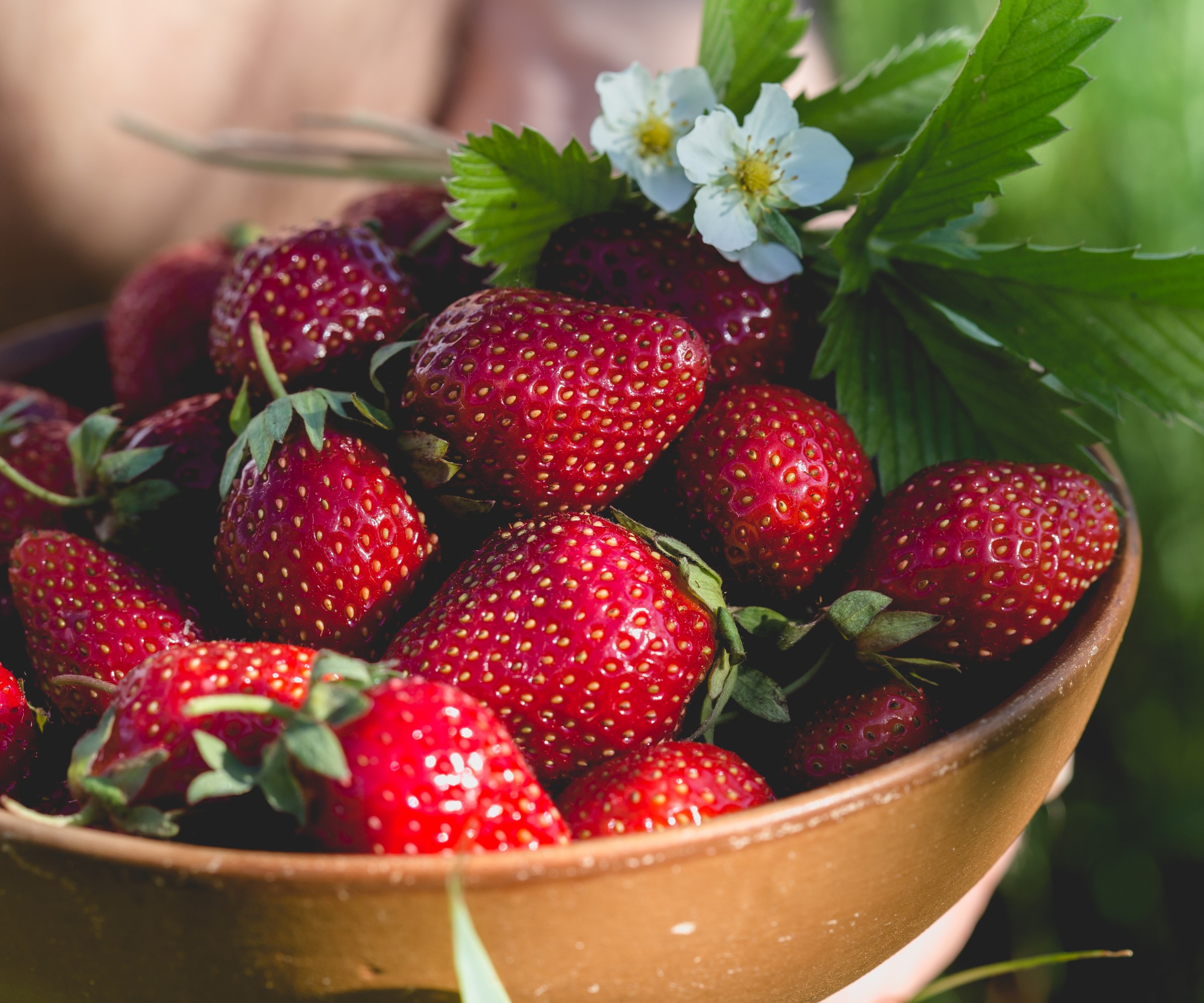
Many strawberry problems can impact the potential harvest
6 problems to avoid when growing strawberries
There are many strawberry-growing mistakes that gardeners can make and they can all have a massive impact on the resulting harvest.
Some of the issues will not apply if you are growing strawberries in pots or attempting to grow strawberries indoors. However, if you find yourself wondering 'why aren't my strawberries growing?', then one or more of the following could be the cause.
1. Picking the wrong variety
When perusing catalogs, websites, or nurseries, there may be many different types of strawberry plants to choose from. However, you must understand the differences between them. There are June-bearing, everbearing, and day-neutral types. June-bearing offer a single, large crop in June, everbearing give two crops a year in June and fall, and day-neutral berries produce fruit all the way from spring into fall.
Nancy Trautz Awot, Horticulture Specialist at Burpee Gardening, advises that growers take into account their USDA plant hardiness zone and available space, as well as their goals and needs for their strawberries when picking the variety to grow. She adds: ‘Picking the correct variety of strawberry is essential to having the most success in your garden.’
You will discover that there are some cultivars that can thrive in many environments, while some may not be happy in all climatic zones. It is always best to research varieties to make sure that the plants will grow successfully in your USDA zone. Taking the time to select the right variety can help give some level of guarantee that the plant will survive in your yard. Furthermore, if you are growing strawberries in pots, then make sure to pick a variety that is ideally suited to containers, such as strawberry 'Tristan' available from Burpee.
Design expertise in your inbox – from inspiring decorating ideas and beautiful celebrity homes to practical gardening advice and shopping round-ups.

When growing strawberries in pots, make sure to pick a suitable variety
2. Planting in the wrong spot
Getting the location right for planting strawberries will be key to having happy plants and the biggest and best harvest. Most strawberry varieties want to be planted somewhere that gets six to ten hours of direct sunlight every day. They will tolerate some shade, but the more sun they get, the more fruits you will be rewarded with.
Strawberry plants also want to be in well-draining soil – they like the ground to be moist but not waterlogged.
Certain strawberry plant diseases, including gray mold and black spot, can be deterred by growing strawberries in the ideal spot with enough sun and also by giving each plant enough space for good air circulation. Pests or diseases can have a massive impact on any crop so take measures, including correct planting, to help give your plants a fighting chance.
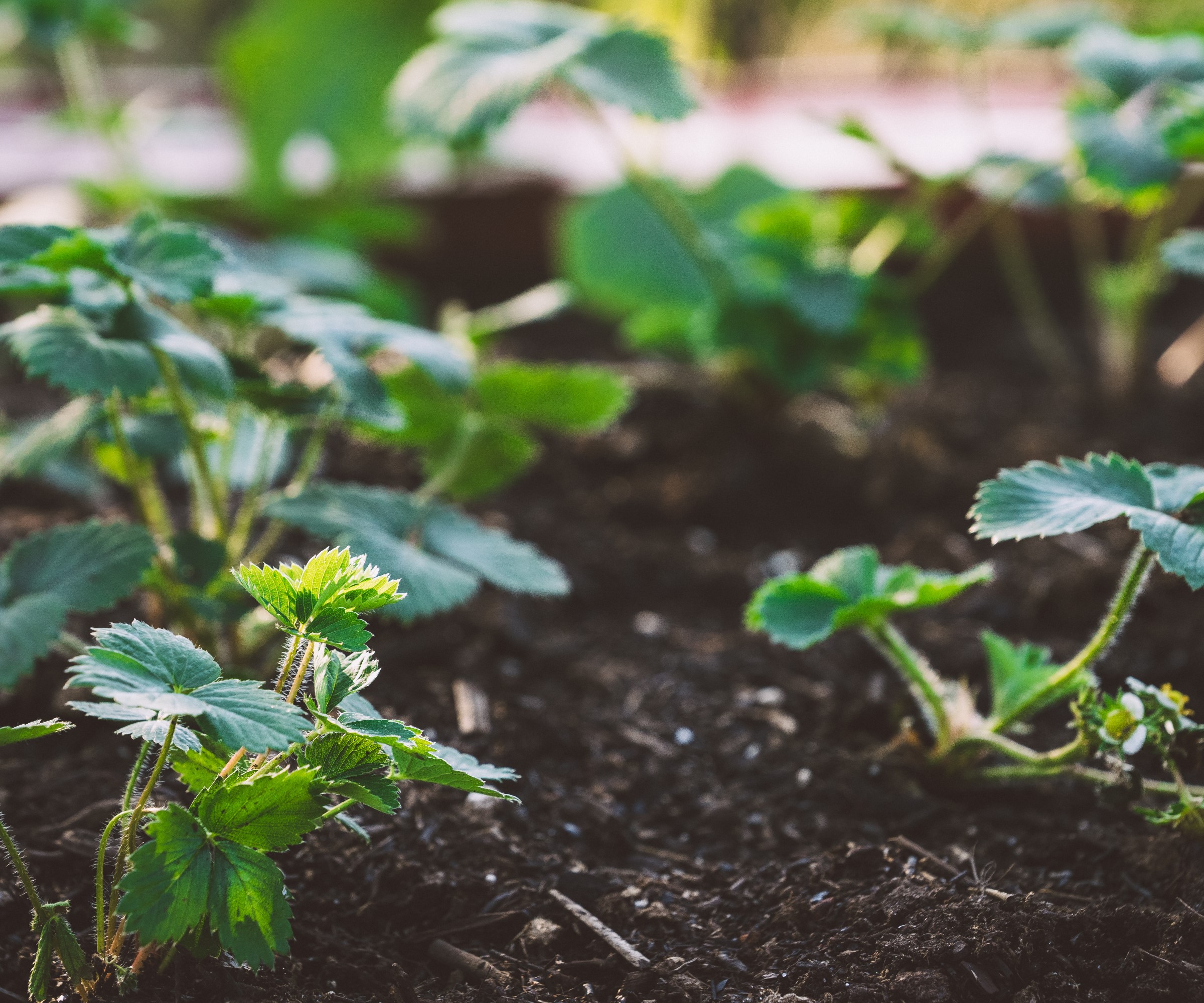
Strawberries want lots of sun and free-draining soil
3. Planting crowns too deep
Strawberry plants have very shallow roots and planting them too close to the surface of the soil can cause them to dry out very easily and perish before establishing. However, you also do not want to plant the crown too deep as it can cause serious problems.
Ben Hilton, Founder and Editor of The Yard and Garden warns: ‘The crown is the point at which new leaves and shoots will form, so it's important that they are not buried too deep in the soil.' Doing so exposes the crown to excessive moisture, he explains. 'This can lead to crown rot which will ultimately kill the plant.’
Strawberry crowns want to be planted no deeper than one inch below the surface, with the crown poking out of the soil. Gently firm the crown into the soil and water it well to help settle the soil around its roots. Around six weeks after planting is a great time to fertilize strawberries to help them start to produce flowers.

Ben Hilton is a seasoned Master Gardener and author of the book Propagating Houseplants Made Easy, available as an e-book at Amazon. He has contributed to numerous publications, including Better Homes & Gardens, Garden Design Magazine, and The English Garden, and is the Founder and Editor in Chief of two popular gardening websites – TheYardAndGarden.com and TheGardeningFix.com.
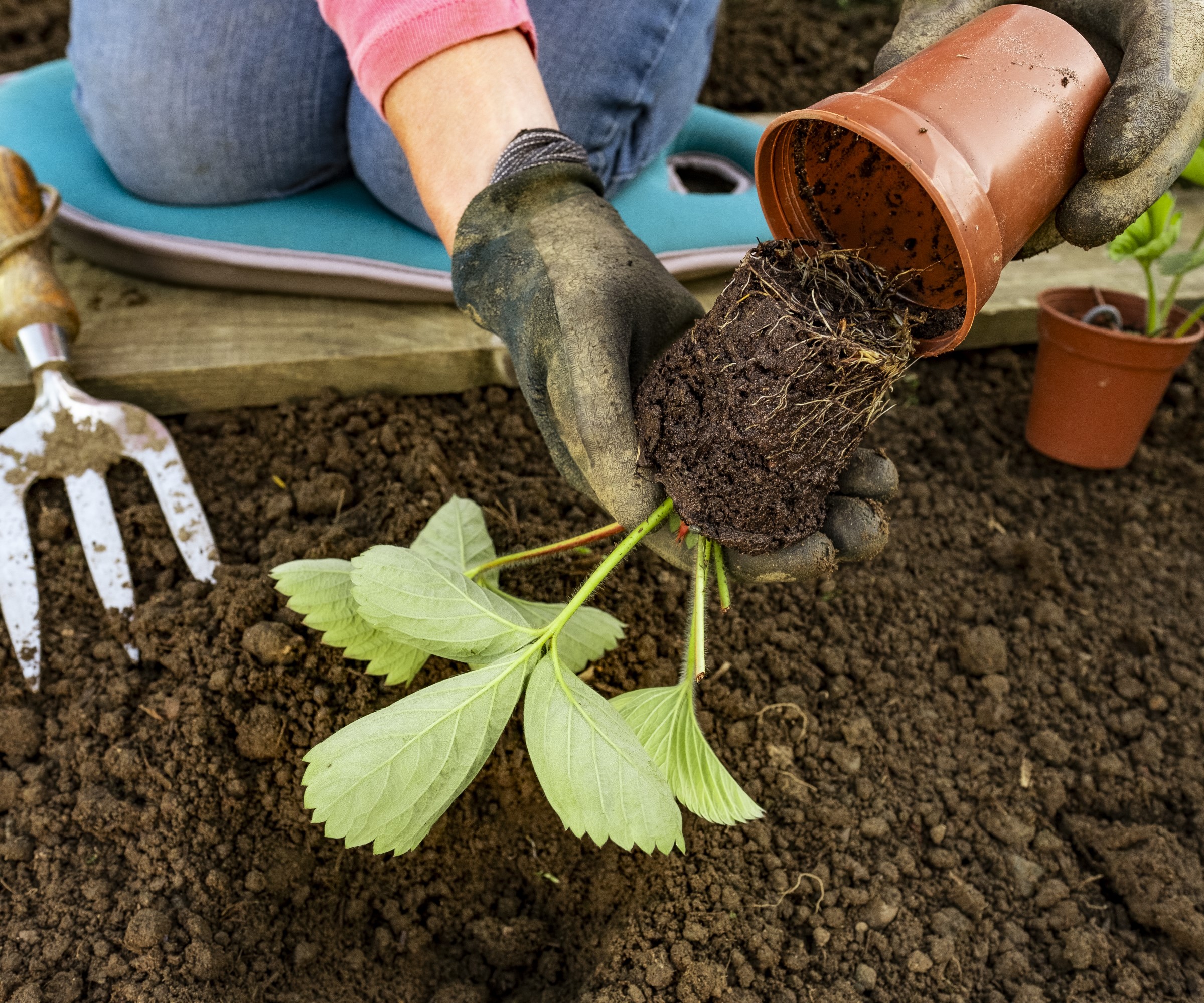
Planting both too shallow or too deep can cause problems for strawberries
4. Not mulching around plants
Putting mulch around strawberry plants is very important and not adding it is one of the most common strawberry-growing mistakes that people make.
Mulching is good for most crops, but especially strawberries. Ben advises: ‘Mulching strawberries is essential to conserve soil moisture, regulate temperature, and suppress weed growth. Without mulch, soil can dry out quickly or get too hot, making growing conditions tough for strawberries.’
He adds that growers should spread an inch or two around the base of each plant, making sure not to cover the crown. You do need to lift any foliage up so that it sits on top of the mulch layer. As well as retaining moisture, the mulch can also keep plants clean and raise fruits from sitting on the soil and potentially rotting or being eaten by pests such as slugs.
Mulching can play a key part in how to winterize strawberry plants as, if you live in USDA zones 3, 4, 5, and northernmost parts of 6, a mulch with a lightweight material such as straw can protect the roots from harsh winter frosts.
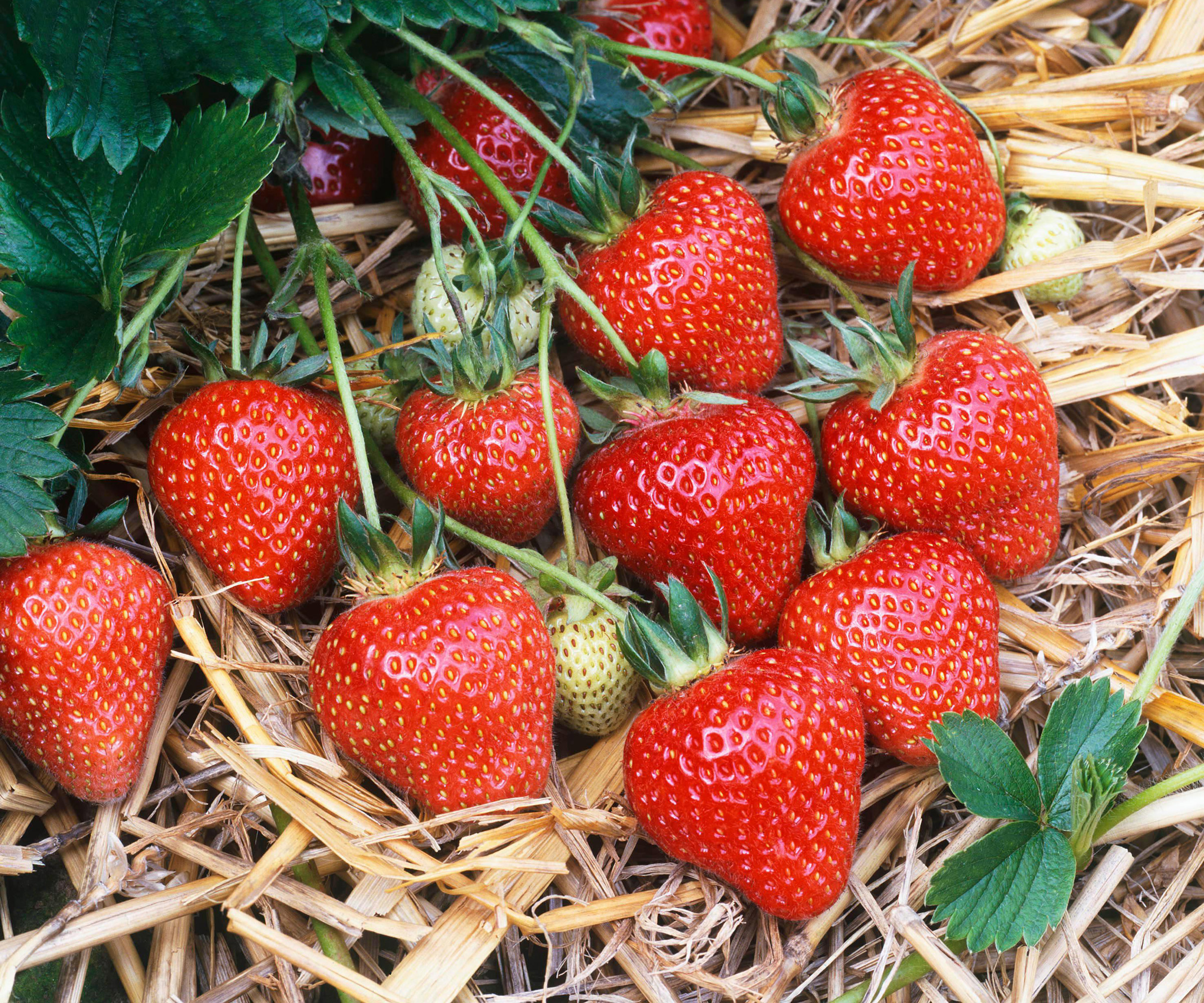
Mulching offers many benefits when growing strawberries
5. Not removing the old leaves
At the end of each growing season, growers should remove the old foliage from their strawberry plants. Not doing so is a common mistake, however it is an important task as old leaves can reduce the plant’s overall strength and prevent new fruits from developing. Old leaves can also become a breeding ground for strawberry pests and diseases that can be damaging to a plant.
Anne Swithinbank, a gardening expert for Homes & Gardens, advises: ‘Immediately after cropping, shear away and clear old foliage along with straw and other debris to be disposed of away from the garden. This removes diseased foliage and lets more light into the crowns, encouraging new growth.'
It is very simple to remove the old leaves. Simply use pruning shears – such as the Fiskars Bypass Pruning Shears available at Amazon – to snip away dead foliage ahead of the new growth appearing.

Having trained at Kew Gardens in London and worked in parks department nurseries and as Glasshouse Supervisor at RHS Wisley, Anne has been a freelance horticulturist since 1986. Anne writes for Amateur Gardening magazine in the UK and has been a panelist on BBC Radio 4’s Gardeners’ Question Time for 27 years.
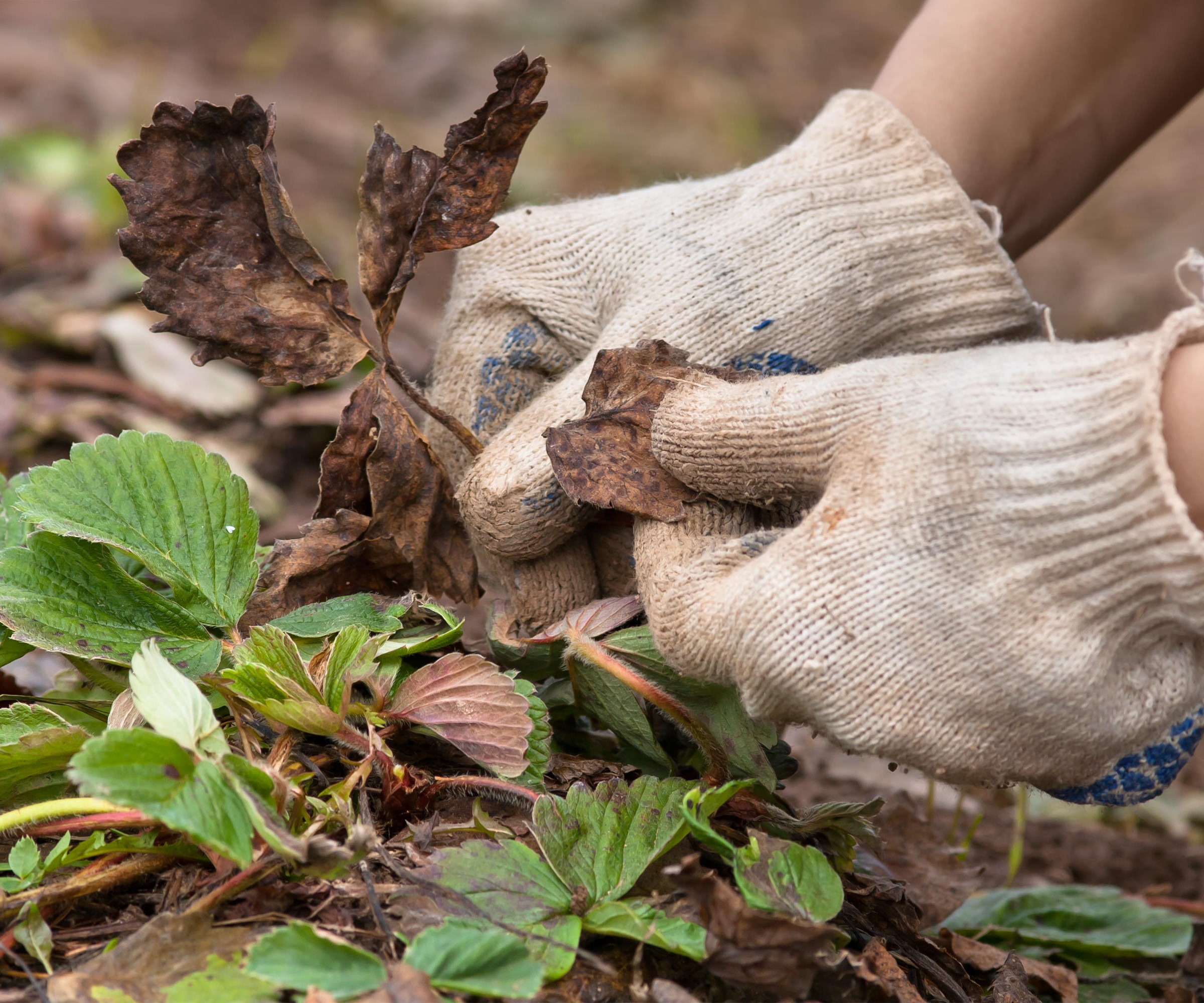
Clearing old leaves allows light into the strawberry crowns
6. Leaving the runners intact
Growing runners takes a lot of energy from a plant, meaning there is less energy to put into producing fruit. What's more, the new plants that form from runners reduce the nutrients available to the mother plant, and its overall vigor and production of fruit take a hit as a result. So, to prevent your strawberry plants from being overgrown and their yield being reduced, it's important to remove these runners.
You can plant the runners separately in their own pot or in another area – that way, not only will you be preserving the vigor and health of existing plants, but you'll be getting a new generation of plants, too.
Strawberries are so popular to grow, partly due to their versatility. They are tasty additions to kitchen gardens and can also be grown in pots in a container garden. However, there can be many reasons for plants not performing as well as expected.
Many factors can be out of your hands – for example, you cannot choose the weather. But focus on the things you can control. Pick the right varieties and plant them properly and in the right spots. And always make sure to have the likes of mulching plants, removing old leaves, and taking off runners on your to-do list for the season. The plants will benefit, be healthy, and reward you with an abundance of fruits each year.

Drew has worked as a writer since 2008 and was also a professional gardener for many years. As a trained horticulturist, he worked in prestigious historic gardens, including Hanbury Hall and the world-famous Hidcote Manor Garden. He also spent time as a specialist kitchen gardener at Soho Farmhouse and Netherby Hall, where he grew vegetables, fruit, herbs, and cut flowers for restaurants. Drew has written for numerous print and online publications and is an allotment holder and garden blogger. He is shortlisted for the Digital Gardening Writer of the Year at the 2025 Garden Media Guild Awards.